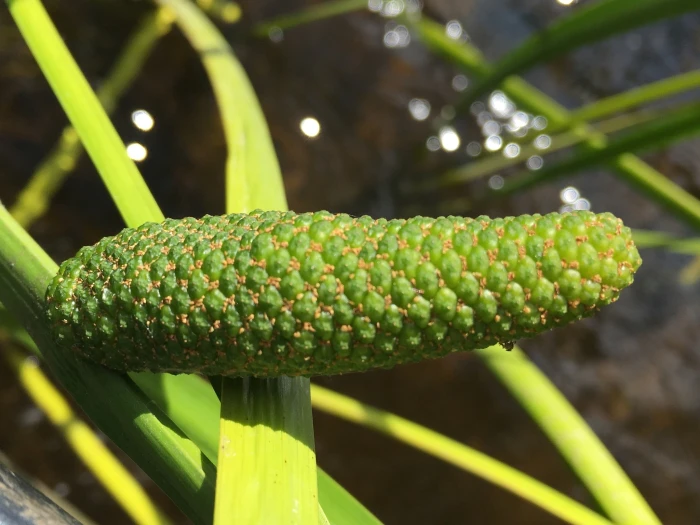American Sweet Flag
(Acorus americanus)
American Sweet Flag (Acorus americanus)
/
/

Bonnie Isaac
Public Domain
Image By:
Bonnie Isaac
Recorded By:
Copyright:
Public Domain
Copyright Notice:
Photo by: Bonnie Isaac | License Type: Public Domain | License URL: http://creativecommons.org/publicdomain/zero/1.0/ | Rights Holder: Bonnie Isaac | Publisher: iNaturalist | Date Created: 2019-08-20T15:17:16-07:00 |




































Estimated Native Range
Climate Requirements
| • Precipitation | 10" - 104" |
| • High Temp. | 65°F - 92°F |
| • Low Temp. | -25°F - 34°F |
Summary
Acorus americanus, commonly known as American Sweet Flag, is an evergreen perennial herb native to wetlands, marshes, and the edges of ponds and streams in the Northcentral and Northeastern United States and Canada. It typically grows to a height of 2 to 4 feet (0.6 to 1.2 meters) and spreads slowly by rhizomes to form dense colonies. The plant features bright green, sword-shaped leaves that emanate a citrus-like spicy aroma when crushed, which has historically been used to flavor beer and stews. The inconspicuous greenish-yellow flowers appear in late spring to early summer on a spadix, which is partially enclosed by a leaf-like spathe. Although the flowers are not showy, the plant is valued for its aromatic foliage and its ability to thrive in wet conditions.
American Sweet Flag is often used in water gardens, rain gardens, and as a naturalizing plant in wetland restoration projects. It is highly adaptable to various wet soil conditions and can be grown in standing water, making it an excellent choice for pond edges and bog gardens. The plant prefers full sun to part shade and requires consistently moist to wet soil. While it is low-maintenance and generally free from serious pests and diseases, it can be susceptible to leaf spot. It is important to note that American Sweet Flag is protected in some states, such as Pennsylvania, where it is considered a state endangered species.CC BY-SA 4.0
American Sweet Flag is often used in water gardens, rain gardens, and as a naturalizing plant in wetland restoration projects. It is highly adaptable to various wet soil conditions and can be grown in standing water, making it an excellent choice for pond edges and bog gardens. The plant prefers full sun to part shade and requires consistently moist to wet soil. While it is low-maintenance and generally free from serious pests and diseases, it can be susceptible to leaf spot. It is important to note that American Sweet Flag is protected in some states, such as Pennsylvania, where it is considered a state endangered species.CC BY-SA 4.0
Plant Description
- Plant Type: Herb
- Height: 2-3 feet
- Width: 1.5-2 feet
- Growth Rate: Moderate
- Flower Color: N/A
- Flowering Season: Spring
- Leaf Retention: Evergreen
Growth Requirements
- Sun: Full Sun, Part Shade
- Water: High
- Drainage: Slow
Common Uses
Deer Resistant, Fragrant, Low Maintenance, Rabbit Resistant, Water Garden
Natural Habitat
native to wetlands, marshes, and the edges of ponds and streams in the Northcentral and Northeastern United States and Canada
Other Names
Common Names: Sweetflag , Belle-Angélique
Scientific Names: Acorus americanus , Acorus calamus var. americanus
GBIF Accepted Name: Acorus calamus var. americanus Raf.